Luis Quesada
Developing Approaches for Solving a Telecommunications Feature Subscription Problem
Jan 16, 2014
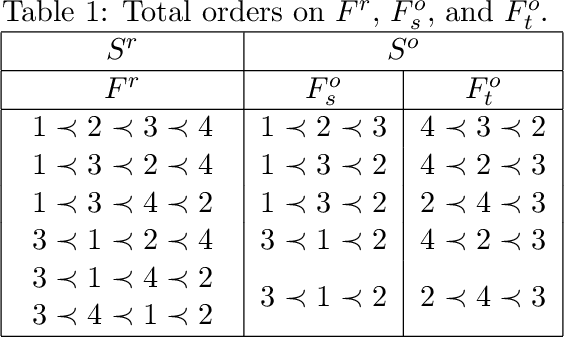
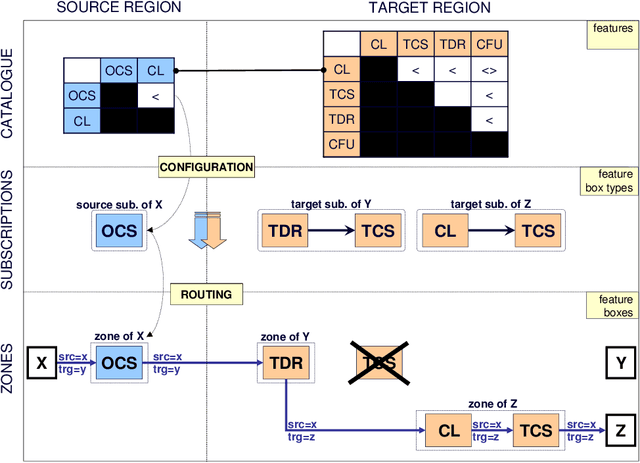

Abstract:Call control features (e.g., call-divert, voice-mail) are primitive options to which users can subscribe off-line to personalise their service. The configuration of a feature subscription involves choosing and sequencing features from a catalogue and is subject to constraints that prevent undesirable feature interactions at run-time. When the subscription requested by a user is inconsistent, one problem is to find an optimal relaxation, which is a generalisation of the feedback vertex set problem on directed graphs, and thus it is an NP-hard task. We present several constraint programming formulations of the problem. We also present formulations using partial weighted maximum Boolean satisfiability and mixed integer linear programming. We study all these formulations by experimentally comparing them on a variety of randomly generated instances of the feature subscription problem.
A Model-Driven Probabilistic Parser Generator
May 14, 2012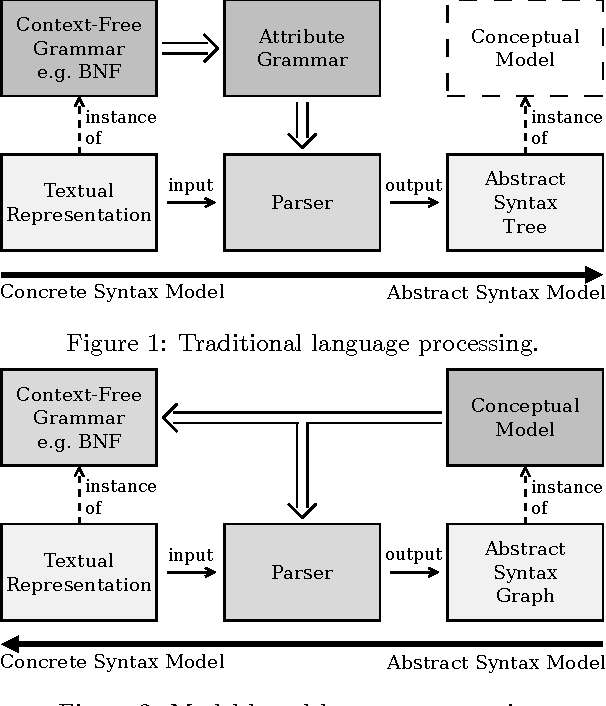



Abstract:Existing probabilistic scanners and parsers impose hard constraints on the way lexical and syntactic ambiguities can be resolved. Furthermore, traditional grammar-based parsing tools are limited in the mechanisms they allow for taking context into account. In this paper, we propose a model-driven tool that allows for statistical language models with arbitrary probability estimators. Our work on model-driven probabilistic parsing is built on top of ModelCC, a model-based parser generator, and enables the probabilistic interpretation and resolution of anaphoric, cataphoric, and recursive references in the disambiguation of abstract syntax graphs. In order to prove the expression power of ModelCC, we describe the design of a general-purpose natural language parser.
Using Barriers to Reduce the Sensitivity to Edge Miscalculations of Casting-Based Object Projection Feature Estimation
Mar 01, 2012



Abstract:3D motion tracking is a critical task in many computer vision applications. Unsupervised markerless 3D motion tracking systems determine the most relevant object in the screen and then track it by continuously estimating its projection features (center and area) from the edge image and a point inside the relevant object projection (namely, inner point), until the tracking fails. Existing reliable object projection feature estimation techniques are based on ray-casting or grid-filling from the inner point. These techniques assume the edge image to be accurate. However, in real case scenarios, edge miscalculations may arise from low contrast between the target object and its surroundings or motion blur caused by low frame rates or fast moving target objects. In this paper, we propose a barrier extension to casting-based techniques that mitigates the effect of edge miscalculations.
Filling-Based Techniques Applied to Object Projection Feature Estimation
Feb 29, 2012
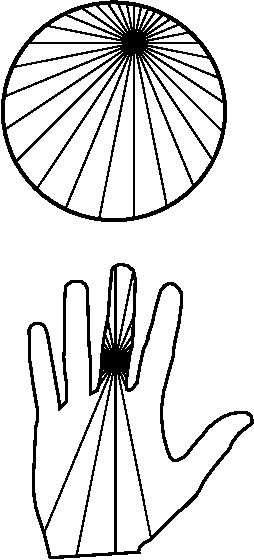
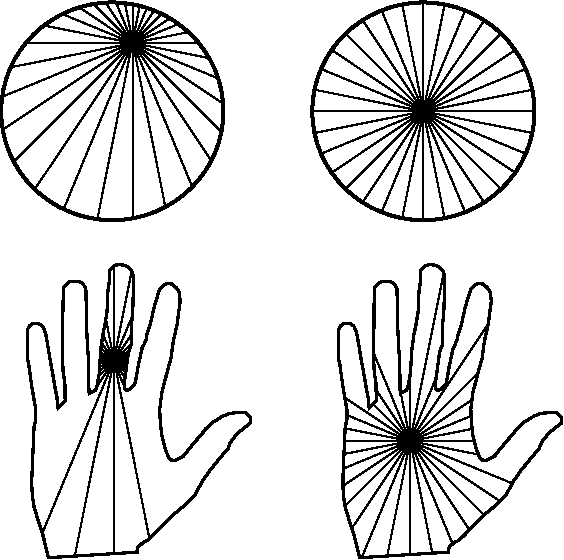
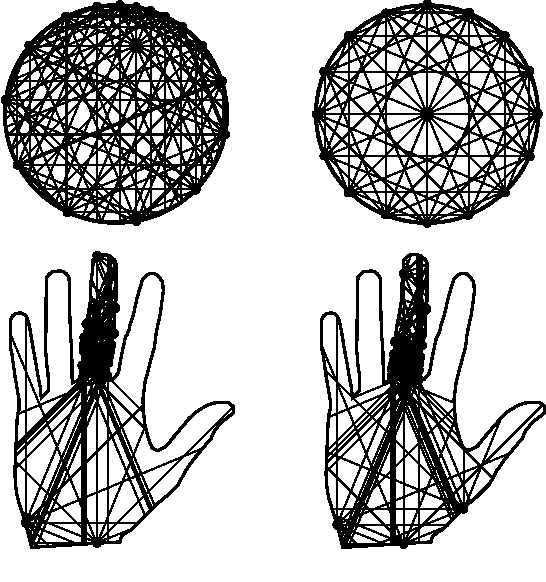
Abstract:3D motion tracking is a critical task in many computer vision applications. Unsupervised markerless 3D motion tracking systems determine the most relevant object in the screen and then track it by continuously estimating its projection features (center and area) from the edge image and a point inside the relevant object projection (namely, inner point), until the tracking fails. Existing object projection feature estimation techniques are based on ray-casting from the inner point. These techniques present three main drawbacks: when the inner point is surrounded by edges, rays may not reach other relevant areas; as a consequence of that issue, the estimated features may greatly vary depending on the position of the inner point relative to the object projection; and finally, increasing the number of rays being casted and the ray-casting iterations (which would make the results more accurate and stable) increases the processing time to the point the tracking cannot be performed on the fly. In this paper, we analyze an intuitive filling-based object projection feature estimation technique that solves the aforementioned problems but is too sensitive to edge miscalculations. Then, we propose a less computing-intensive modification to that technique that would not be affected by the existing techniques issues and would be no more sensitive to edge miscalculations than ray-casting-based techniques.
A Lexical Analysis Tool with Ambiguity Support
Feb 29, 2012
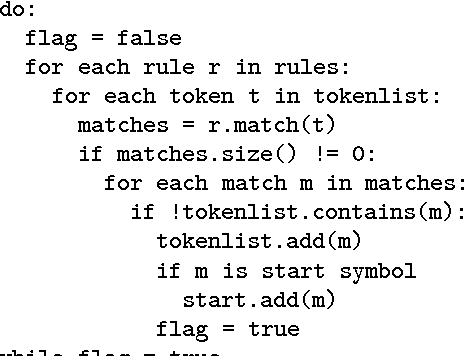


Abstract:Lexical ambiguities naturally arise in languages. We present Lamb, a lexical analyzer that produces a lexical analysis graph describing all the possible sequences of tokens that can be found within the input string. Parsers can process such lexical analysis graphs and discard any sequence of tokens that does not produce a valid syntactic sentence, therefore performing, together with Lamb, a context-sensitive lexical analysis in lexically-ambiguous language specifications.
A Constraint-Satisfaction Parser for Context-Free Grammars
Feb 02, 2012



Abstract:Traditional language processing tools constrain language designers to specific kinds of grammars. In contrast, model-based language specification decouples language design from language processing. As a consequence, model-based language specification tools need general parsers able to parse unrestricted context-free grammars. As languages specified following this approach may be ambiguous, parsers must deal with ambiguities. Model-based language specification also allows the definition of associativity, precedence, and custom constraints. Therefore parsers generated by model-driven language specification tools need to enforce constraints. In this paper, we propose Fence, an efficient bottom-up chart parser with lexical and syntactic ambiguity support that allows the specification of constraints and, therefore, enables the use of model-based language specification in practice.
The Object Projection Feature Estimation Problem in Unsupervised Markerless 3D Motion Tracking
Nov 18, 2011
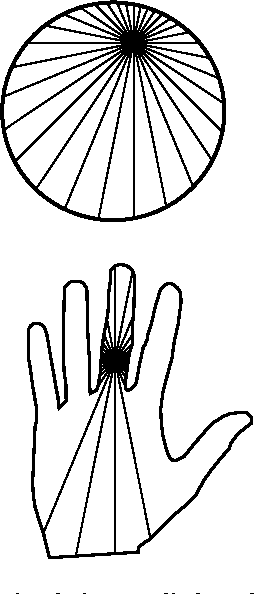

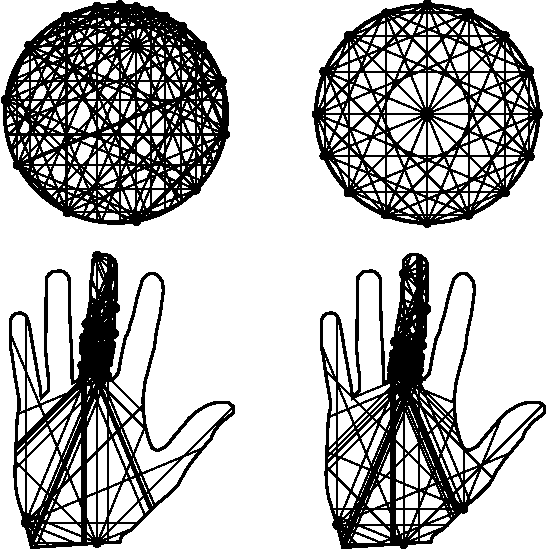
Abstract:3D motion tracking is a critical task in many computer vision applications. Existing 3D motion tracking techniques require either a great amount of knowledge on the target object or specific hardware. These requirements discourage the wide spread of commercial applications based on 3D motion tracking. 3D motion tracking systems that require no knowledge on the target object and run on a single low-budget camera require estimations of the object projection features (namely, area and position). In this paper, we define the object projection feature estimation problem and we present a novel 3D motion tracking system that needs no knowledge on the target object and that only requires a single low-budget camera, as installed in most computers and smartphones. Our system estimates, in real time, the three-dimensional position of a non-modeled unmarked object that may be non-rigid, non-convex, partially occluded, self occluded, or motion blurred, given that it is opaque, evenly colored, and enough contrasting with the background in each frame. Our system is also able to determine the most relevant object to track in the screen. Our 3D motion tracking system does not impose hard constraints, therefore it allows a market-wide implementation of applications that use 3D motion tracking.
Fence - An Efficient Parser with Ambiguity Support for Model-Driven Language Specification
Oct 07, 2011


Abstract:Model-based language specification has applications in the implementation of language processors, the design of domain-specific languages, model-driven software development, data integration, text mining, natural language processing, and corpus-based induction of models. Model-based language specification decouples language design from language processing and, unlike traditional grammar-driven approaches, which constrain language designers to specific kinds of grammars, it needs general parser generators able to deal with ambiguities. In this paper, we propose Fence, an efficient bottom-up parsing algorithm with lexical and syntactic ambiguity support that enables the use of model-based language specification in practice.
A Combinatorial Optimisation Approach to Designing Dual-Parented Long-Reach Passive Optical Networks
Sep 06, 2011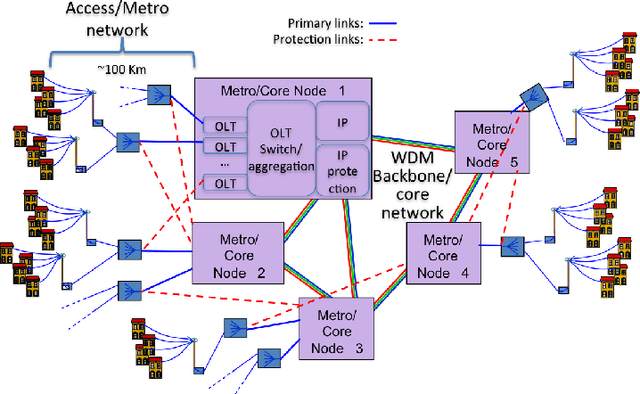
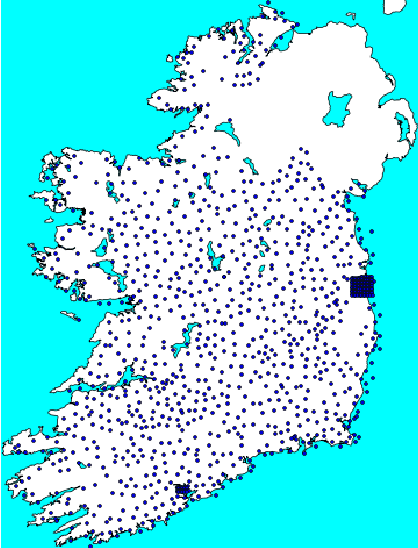

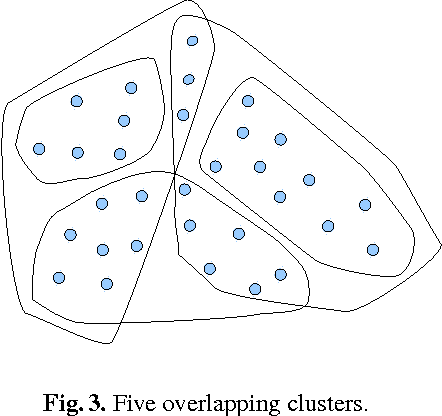
Abstract:We present an application focused on the design of resilient long-reach passive optical networks. We specifically consider dual-parented networks whereby each customer must be connected to two metro sites via local exchange sites. An important property of such a placement is resilience to single metro node failure. The objective of the application is to determine the optimal position of a set of metro nodes such that the total optical fibre length is minimized. We prove that this problem is NP-Complete. We present two alternative combinatorial optimisation approaches to finding an optimal metro node placement using: a mixed integer linear programming (MIP) formulation of the problem; and, a hybrid approach that uses clustering as a preprocessing step. We consider a detailed case-study based on a network for Ireland. The hybrid approach scales well and finds solutions that are close to optimal, with a runtime that is two orders-of-magnitude better than the MIP model.
* University of Ulster, Intelligent System Research Centre, technical report series. ISSN 2041-6407
 Add to Chrome
Add to Chrome Add to Firefox
Add to Firefox Add to Edge
Add to Edge